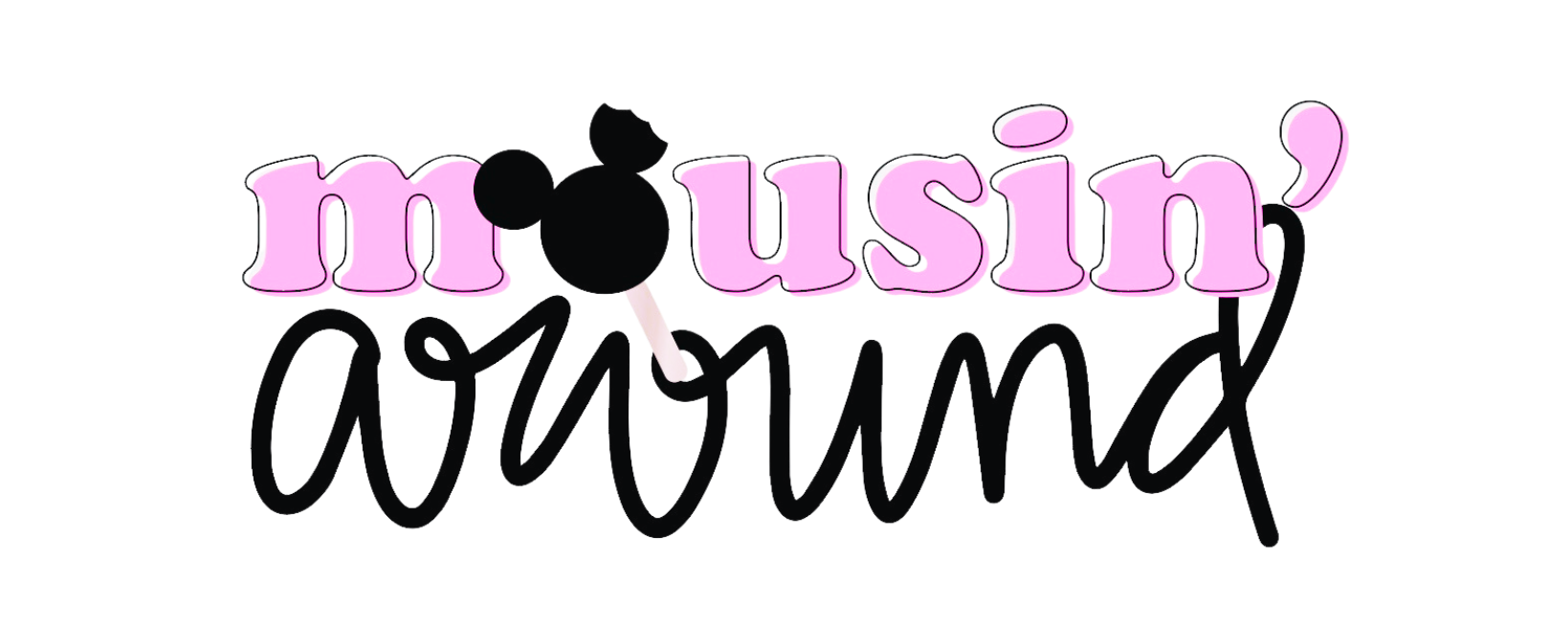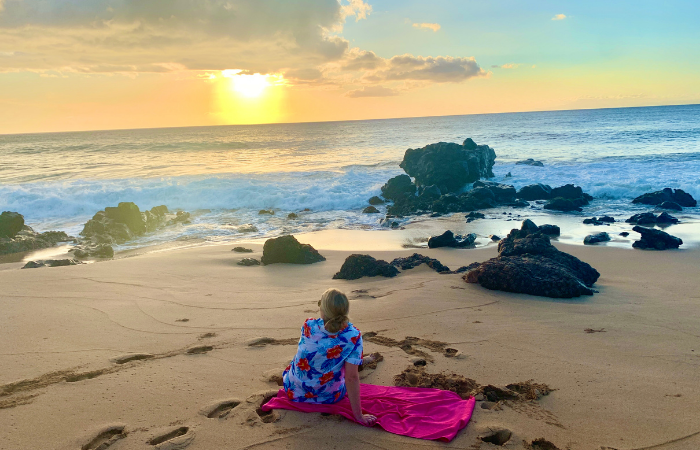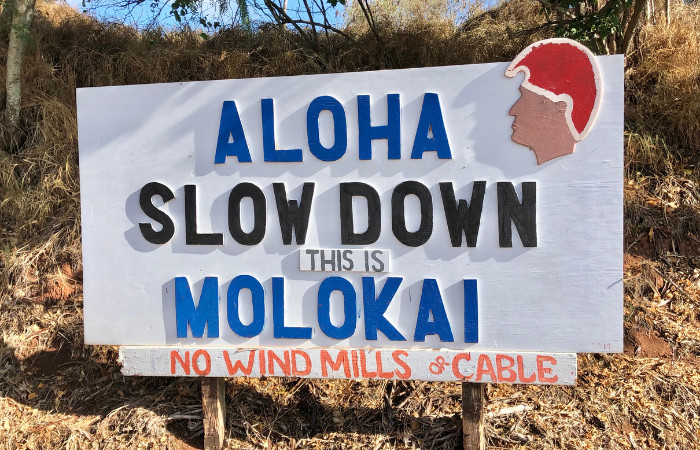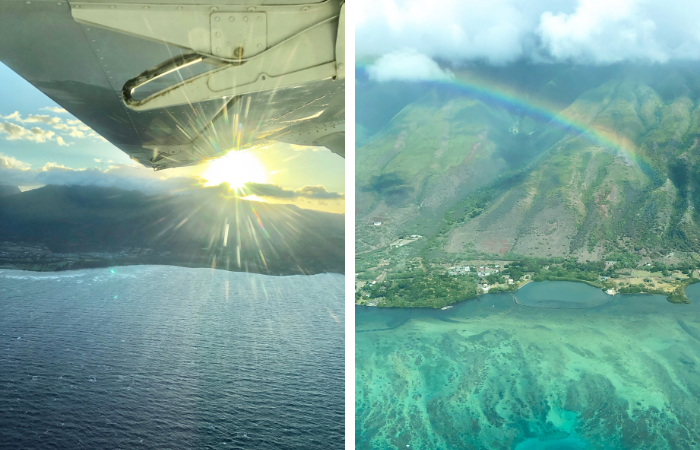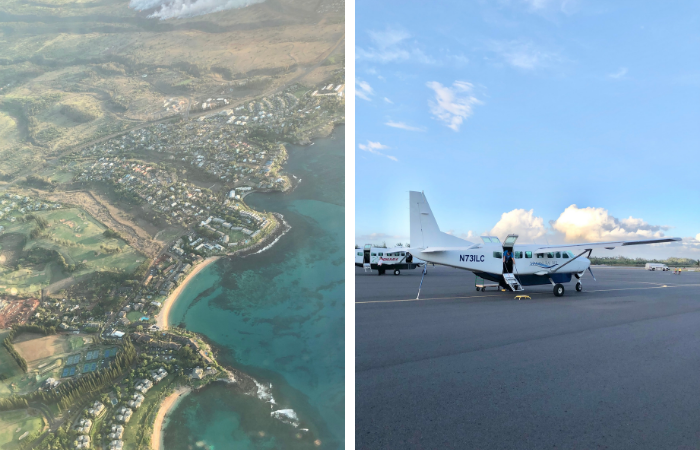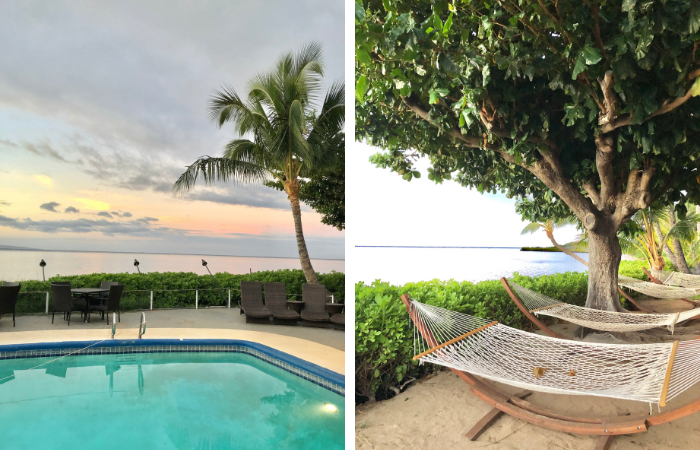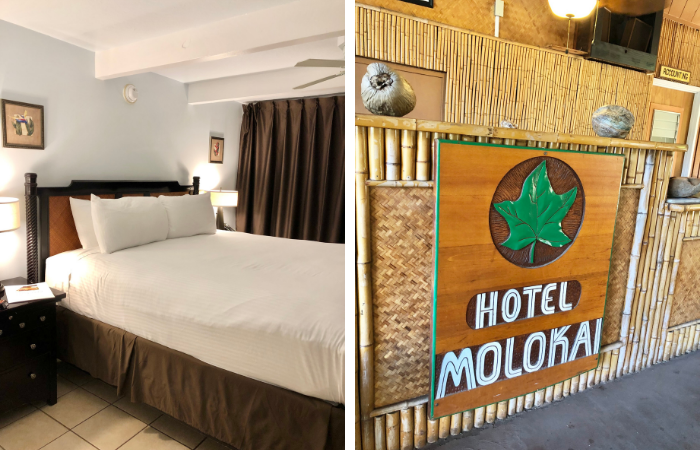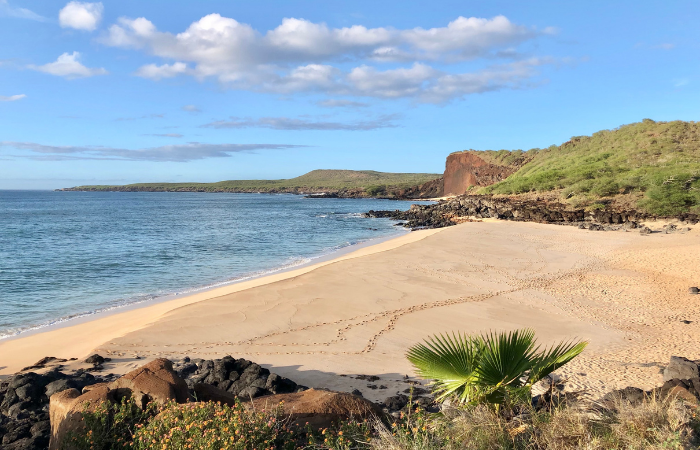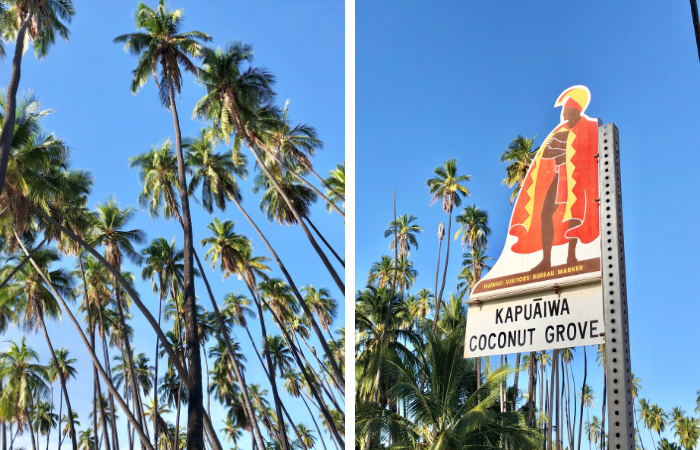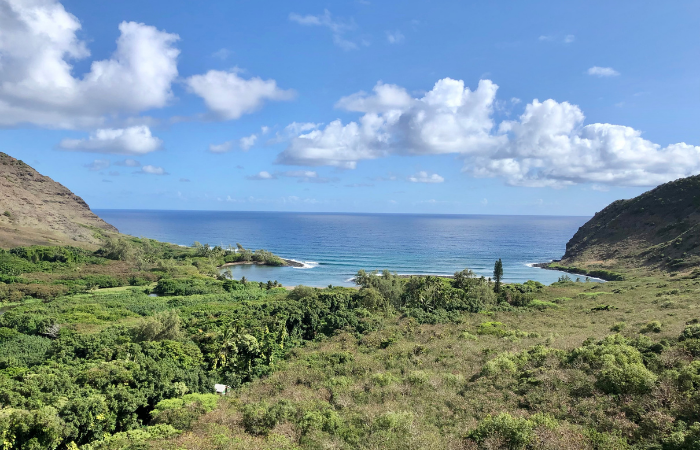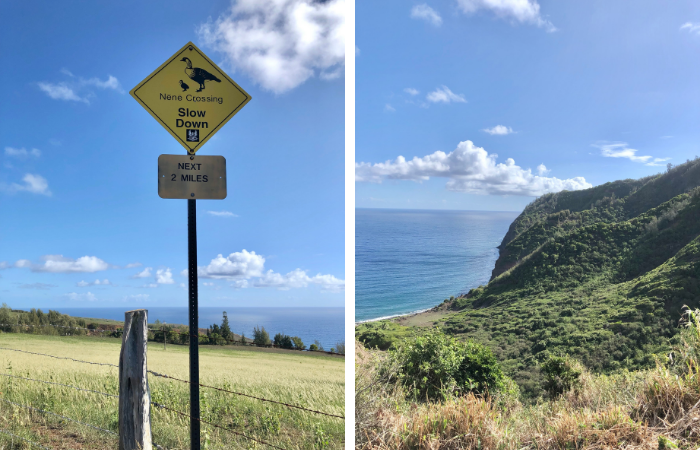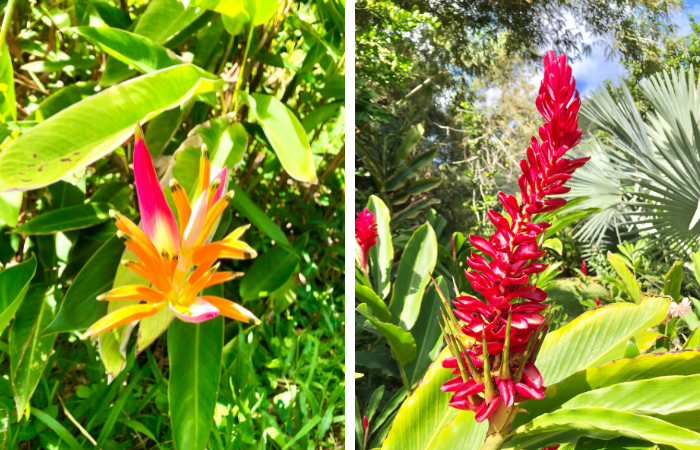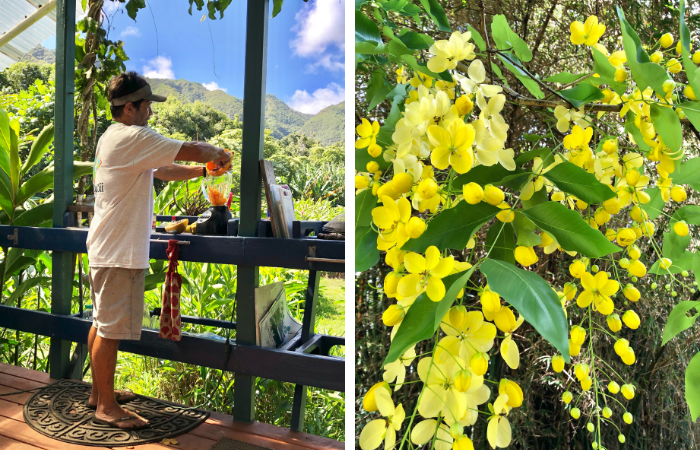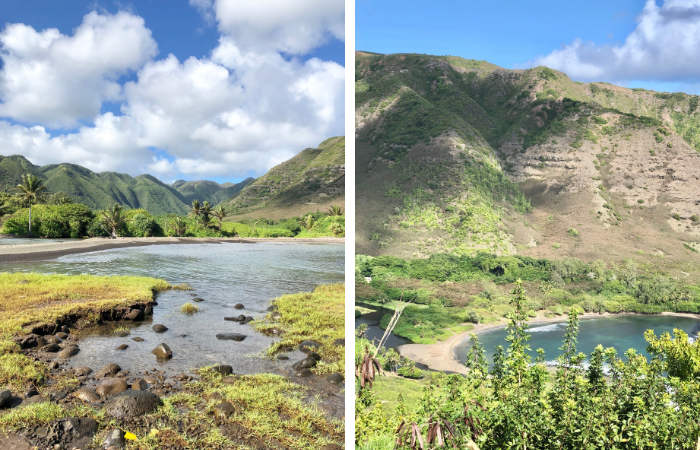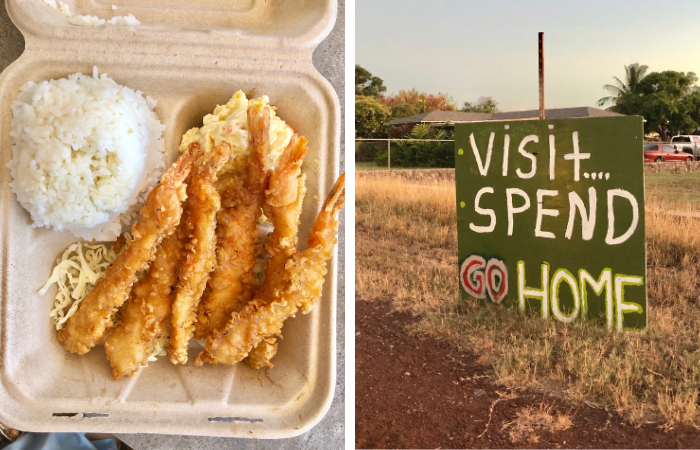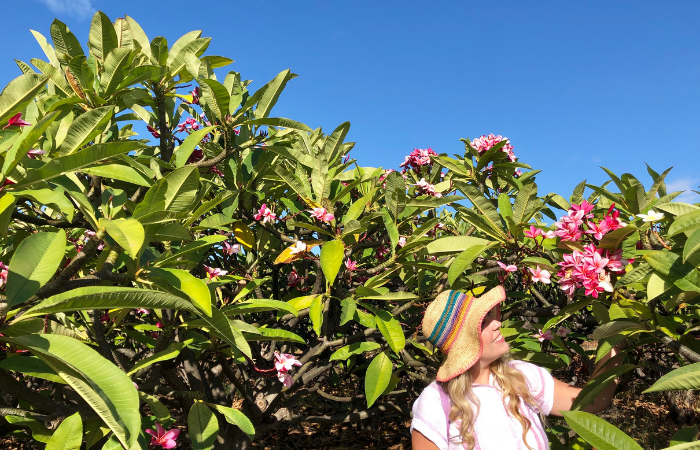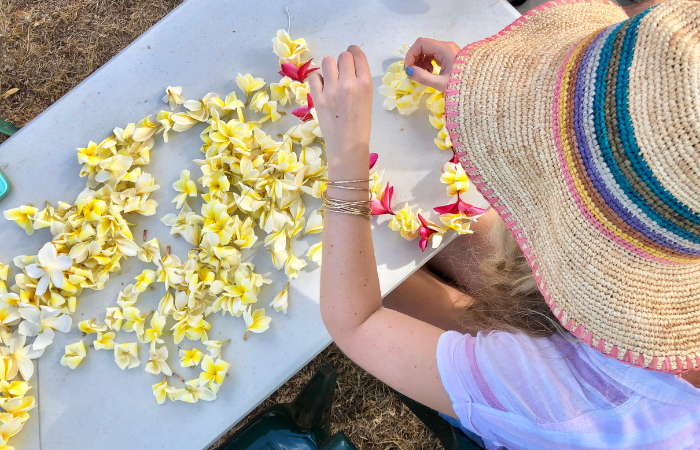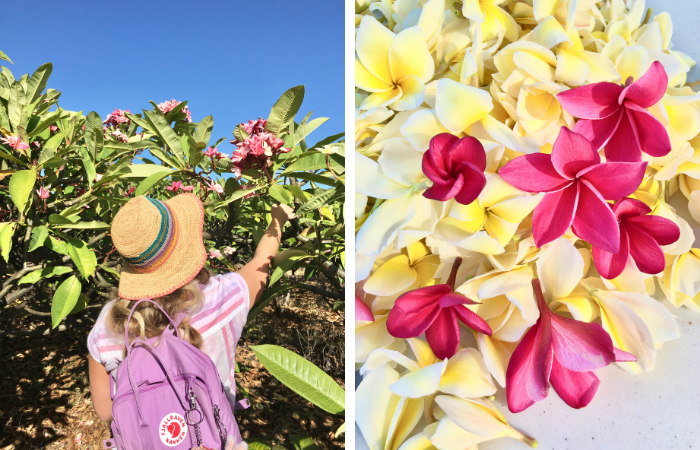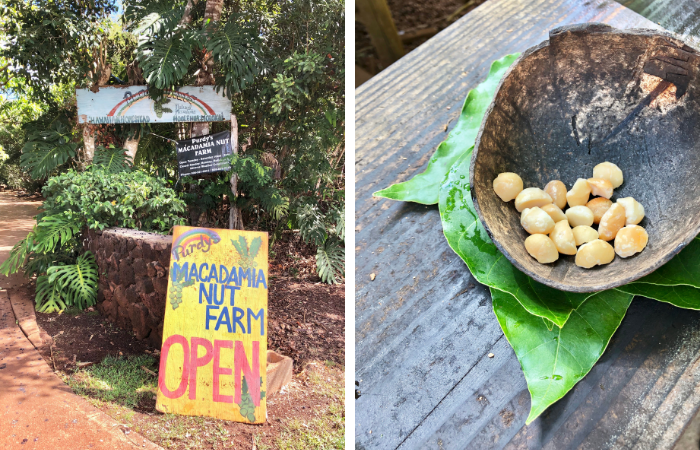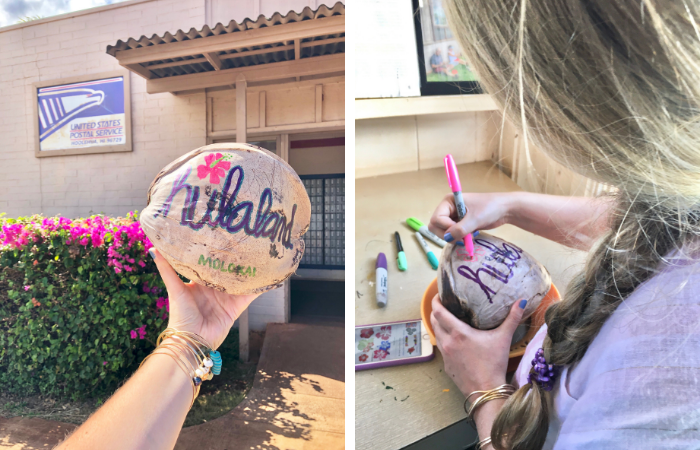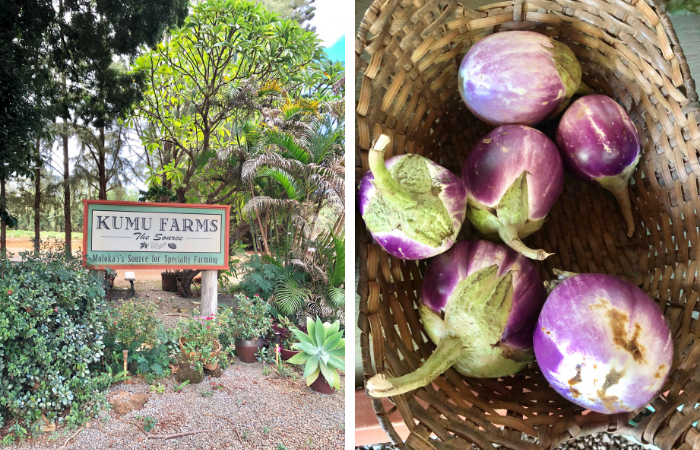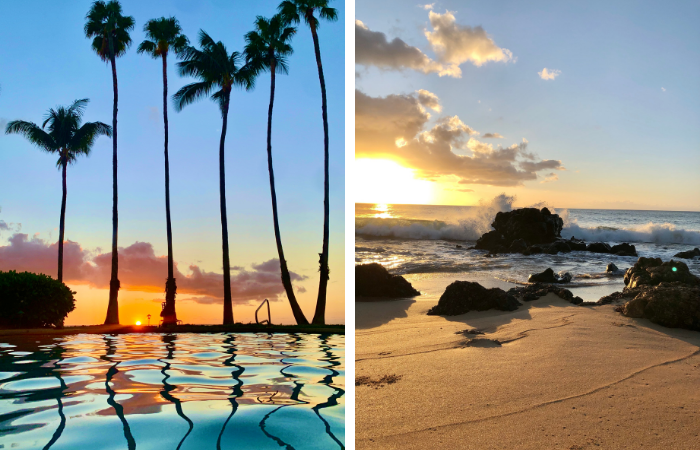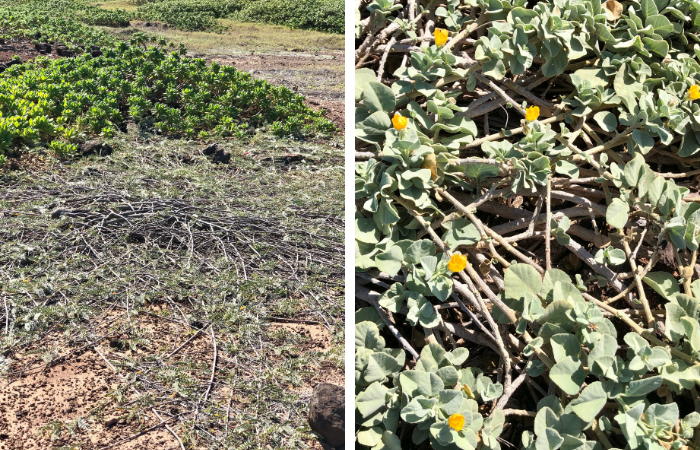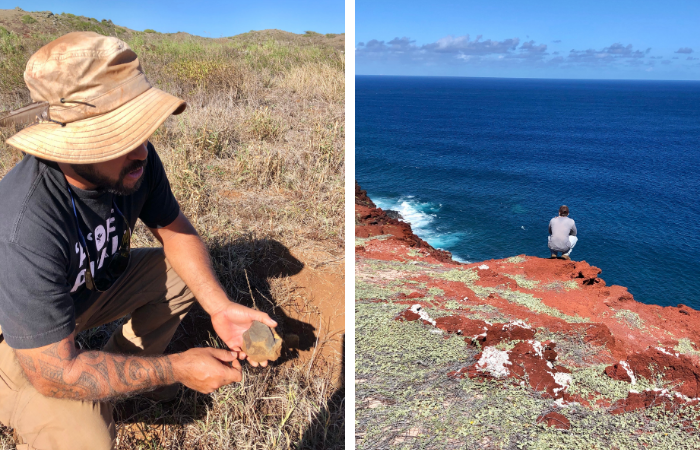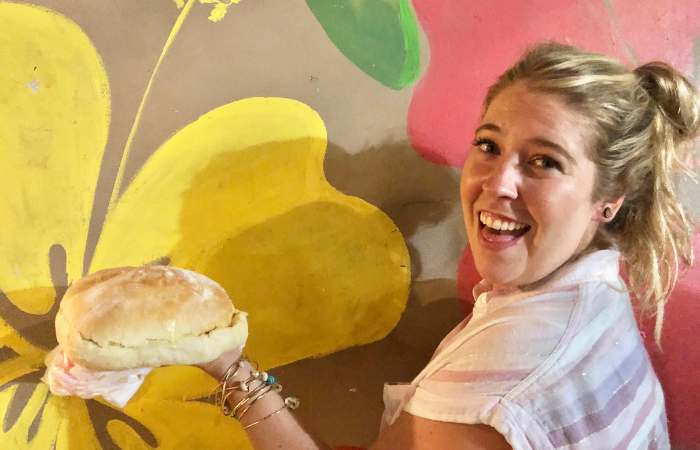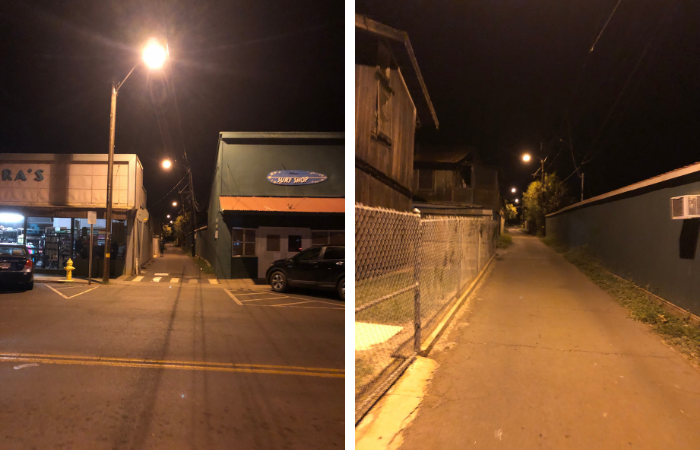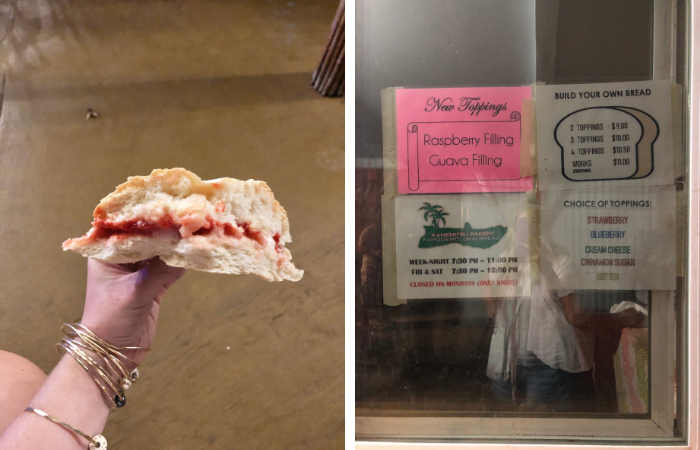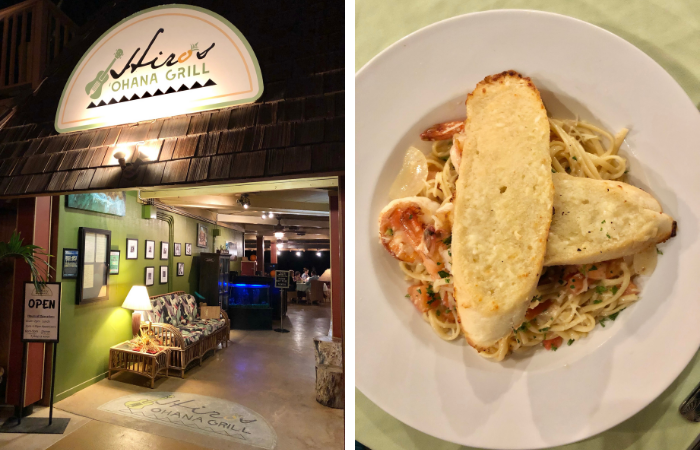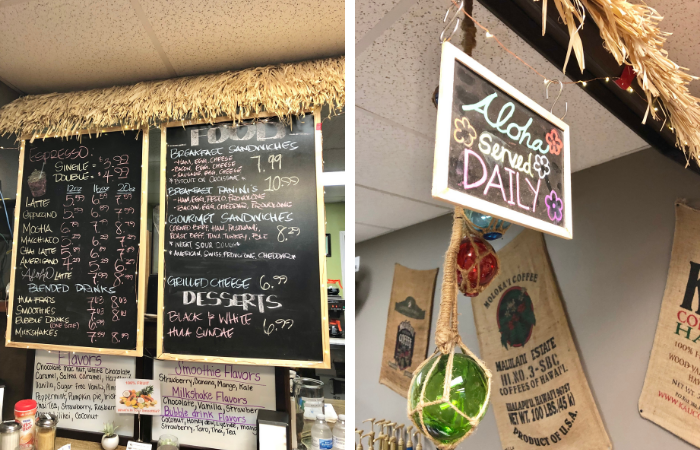Molokai Itinerary: 3 Days of Hiking, Farm Tours & Aloha Spirit
After spending four days on the Hawaiian island of Molokai (often called the most Hawaiian of the Hawaiian Islands), I feel more aware and appreciative of Hawaii and its culture than ever before. Countless trips (and even a brief time actually living in Hawaii) didn’t expose me to the type of uniquely Hawaiian experiences that I was able to participate in during my short time on Molokai.
As a visitor, I’ve never so fully experienced “aloha” anywhere else in Hawaii. Aloha isn’t the waterfalls. It’s not the beaches or the rainbows or the lush green mountains. It’s not the scent of plumeria wafting over you while you relax in a hammock. Aloha isn’t a mai tai. Aloha is the spirit of the people. And there’s nowhere in Hawaii that a visitor is embraced more fully with aloha than Molokai.
After about my second day on Molokai, I realized that the things I was learning, seeing and experiencing on Molokai were all connected to the people of Molokai. Unlike other places in Hawaii where I remember “things I did,” my memories on Molokai are of the people I met. Every experience is connected with a person, sharing their knowledge, their way of life, their culture, and their appreciation for their island.
This is what makes Molokai different from any other Hawaiian Island. It’s what makes it special. Molokai is the fifth largest Hawaiian Island, situated between Maui and Oahu. In the morning, you can watch the sun come up over Maui, and in the evening you can see the lights of Honolulu. But it’s a world away from either island.
For more of a feel for exactly what to expect on a visit to Molokai, read this post.
While I had previously been to Molokai on a day trip from Maui, This trip to Molokai was sponsored by Maui Nui (the tourism board for Maui County), which means all of my expenses were paid for and the itinerary was organized for me. As always, I only recommend my absolute favorites to you. Thank you for supporting the brands that make Mousin’ Around possible.
Molokai Travel Tips: What You Should Know Before You Go
How to get there
By air is the only way to get to Molokai (there is no longer ferry service available from Maui). Mokulele Airlines and Makani Kai both offer numerous flights a day to Molokai (MKK) from both Maui and Oahu. The flight is only about 20 minutes and leaves out of the commuter terminal which means no TSA (show up 30 minutes before your flight, no hectic chaos, no rules about liquids, etc.). The planes are small (only 8-9 passengers), but the views are incredible.
Everything is closed on Sundays
Everything. It’s not a good day to arrive on the island, and honestly if you’re only going to be there for a few days, I would schedule it so you’re not there on Sunday.
Where to Stay on Molokai
Hotel Molokai: The only “hotel” on Molokai, this spot is the perfect place to headquarter your time spent exploring Molokai. The small beachfront property is located super close to town, and while the amenities are modern, it still manages to capture a level of charm and nostalgia reminiscent of a Hawaii you never got to visit. The onsite restaurant (Hiro’s Ohana Grill) and lounge, pool, small beach, and hammocks make for an easy ambience that’s comfortable to come back to at the end of a big day adventuring around the island. Because it’s the only hotel on the island, Hotel Molokai often books up months in advance so be sure to make reservations in plenty of time.
Molokai Shores: Located just down the street from Hotel Molokai, if you don’t need the hotel amenities, you can often find a good deal at this condominium complex. Search for units here.
West End Condos: The beaches on Molokai’s west end are BEAUTIFUL, and while there’s not many amenities out this way (some properties in this area now even sit vacant), there are still a cluster of condo complexes to choose from. Ke Nani Kai, Kepuhi Beach Resort, and Paniolo Hale all rent condos for visitors on Vrbo.
How Long Should You Spend on Molokai?
Molokai has a reputation for being boring or having nothing to do. By the time you finish reading this post, hopefully I’ll have debunked that myth. But it still doesn’t compare to the four main Hawaiian Islands. I think three days is the perfect amount of time to visit Molokai, and while I don’t normally recommend spending so little time on an island because of travel time, the short flight here plus not having to go through TSA means that you have most of your travel days free. I would recommend a day for touring Kalaupapa, a day for the Halawa Valley, and either spending a day with Molokai Outdoors (if you haven’t used them for day 1 or 2) or spending a day filling in with what interests you.
I also recommend sandwiching in your time on Molokai in the middle of your trip. For example, I wouldn’t recommend flying straight to Molokai from the mainland because if your flight to Maui (or Oahu) is delayed, you’ll probably end up missing your connection. Fly to Maui and spend a few days, then hop over to Molokai and end your trip back on Maui for a bit before flying home.
Molokai Itinerary: 3 Days on the Most Hawaiian Island
Day 1: Halawa Valley
The most lush, stunning part of Molokai just might be the Halawa Valley. Located as far as the road goes on the east end of Molokai, the drive out there is incredible. Past restored fish ponds and an amazing lookout where you can see Maui in the distance, the last few miles into the valley remind me a bit of the Road to Hana. Make sure to take time and pull over at all of the lookouts (don’t miss the waterfall at the back of the valley!) on the way down. The beach at the bottom is beautiful, and there are a couple of short trails that will give you a different vantage point.
Seeing the valley on your own is definitely spectacular, but for a truly memorable experience, I recommend at least one of the following:
Halawa Tropical Flower Farm: It’s only fitting that the paradise-like setting of Halawa Valley is home to an incredibly diverse tropical flower farm. The owner of the farm, Kalani, has painstakingly revived his ancestral lands and cultivated them into an exotic farm that is both economical and educational. He graciously opens up his farm to guests (find more information here) and shares the aloha spirit that flows so freely on Molokai by often welcoming them onto his lanai and making his famous smoothies.
Halawa Valley Falls Cultural Hike: I haven’t yet been able enjoy the cultural hike to Mo’oula Falls hosted by the Solatorio family, but it’s high on my list for my next trip to Molokai. Like so many experiences on Molokai, the value of this experience extends beyond just a hike to a beautiful waterfall, but rather, being hosted by a family with such deep and significant roots in the area allows you to be educated in their traditions and cultural practices in a way that would be otherwise impossible. Find more information here.
Manae Goods ‘N Grindz: If you’re heading out to the east end to see Halawa Valley, this little store and food window is the last stop on the road. It’s your typical plate lunch counter (the shrimp tempura was amazing!), which is exactly what you want after a hike. The store also has plenty of snacks (including ice cream and candy bars chilled in the fridge!).
***Want to save major $$$ on your trip to Hawaii? I get asked ALL the time how I’m able to travel so often to Hawaii and stay at really nice resorts. Well, my favorite travel hack is cashing in points to score free airfare and free nights at some of Hawaii’s most high end resorts. Read my full guide on the exact system I use to max out credit card rewards here. Seriously, it’s going to save you soooo much money.
Day 2: Kalaupapa Peninsula
When Hanson’s disease (leprosy) made its way to the Hawaiian Islands in the 1860s, King Kamehameha V declared the isolated Kalaupapa Peninsula on Molokai’s north shore the official settlement for those plagued with the mysterious disease. Since then, over 8000 people have died from the disease at Kalaupapa and while the disease is considered treatable today, there are still a handful of patients who continue to reside at Kalaupapa. In 1980, the area was established as a National Historic Park with the mission of preserving the area along with the memories of those who were removed from their families and banished to this place. The painful history of the peninsula is juxtaposed with its breathtaking beauty. I have not yet been able to tour Kalaupapa, but I will return to Molokai with the sole purpose of doing so.
Even though it is a national park, entry is very restricted and permits must be acquired to visit the peninsula (through tour companies). Your only options of getting to Kalaupapa are to fly in (both Mokulele and Makani Kai offer service) or to hike the 3.5 mile precarious trail in and out (the trail is currently closed due to rock slides but they are working to restore access soon). Either way, once you’re on the peninsula, you have to be part of a guided tour to guarantee entry. Find more information about planning your visit and booking a tour here.
If you’re not able to make it down to the peninsula, the lookout over the Kalaupapa Peninsula is not to be missed. It’s a must see tour stop on Molokai. There’s plenty of parking, there are restrooms, and the overlook is only a short walk from the lot.
Day 3: Farm Tours & An Island Drive
Molokai Plumeria: Visiting the plumeria farm was one of my favorite activities on Molokai. Make an appointment ahead of time to stop by and pick the flowers, string a lei, and talk story with Uncle Dick. Find contact information here.
Purdy’s Mac Nut Farm: Visiting this completely organic macadamia nut farm (who needs pesticides when you have cats?) is an experience you won’t have on one of the Big Island’s mega farms. The owner, Uncle Tuddie, has almost become the main attraction here. Slightly eccentric, but full of heart for his land, he’ll show you around the farm, let you try your hand at cracking the nuts, and he even has a spread put out of roasted mac nuts and coconut strips with assorted dipping sauces. He has some quirks about how he likes to do things, so just follow his lead, but here’s a tip: he LOVES for visitors to ask questions. So be ready! No reservations needed, but his farm is usually open to visitors from 10AM to 2PM except Sundays and Mondays. Read more about the farm here.
Ho’olehua Post Office: Post-a-nut! While you might be able to mail a coconut from other places in Hawaii, it will first involve finding a coconut, having it inspected at the airport, decorating it, and then taking it to the post office. On Molokai, you can just walk right into the post office, pick out a coconut, decorate it (there’s a basket of markers), and mail it right there. It cost about $20 to mail my coconut to the mainland.
Kumu Farms: The produce doesn’t get any fresher than buying it right from the farm. Stop by and pick up some fresh fruit.
Saturday Farmer’s Market: Every Saturday morning in Kaunakakai, local vendors bring their wares (everything from fresh fruit and veggies to jewelry and beyond) and set up on the sidewalk. Have breakfast at Kanemitsu’s Bakery and then stroll past the different booths.
West End Beaches: You can’t come to Molokai without seeing a beach, right? The best ones are on the west end of the island and you’ll enjoy the drive. Papohaku Beach (also called Three Mile Beach) is…you guessed it…three miles of gorgeous golden sand. It’s Molokai’s largest beach and if you’re short on time, it’s the best one. Nearby (just north) is Kepuhi Beach which is also worth a stop (especially around sunset). It’s an interesting area. There’s an abandoned hotel right along the water, but there’s also parts of the property that are still in use. When I was there, the pool was still being maintained and there are some condo units in the area. Along with some places in Mauna Loa, this is where you’ll most notice the effects of the Molokai Ranch closing.
Bonus Day: Volunteer with Molokai Land Trust at the Mokio Preserve
I didn’t include this in the 3 day itinerary, because it’s not something that you can necessarily schedule at your convenience, but if you’re at all interested in volunteer tourism or just learning more about Hawaii, stay in touch with the Molokai Land Trust to see what options are available at the time of your trip. And maybe even plan your trip around one.
Mokio Preserve: A chance to stand on the soil at Mokio Preserve and lend your hand to the restoration work happening there is reason enough to visit Molokai. Mokio Preserve is a 1,718-acre portion of the Molokai Land Trust that fronts roughly five miles of shorefront cliffs. A century of pineapple farming and cattle ranching wrecked the land and left it overran with invasive species.
I was able to witness some of the work of restoring the native ecosystem firsthand on the 60 acres of dunes near Ilio Point. At the time of my visit, kiawe had been cleared from 38 of the 60 acres and extensive plantings were underway. They’re even taking steps to attract the local albatross population to return. Needless to say, anyone inclined towards ecotourism should consider volunteering with the Molokai Land Trust a special opportunity. But it’s more than that.
Besides a chance to sink your hands into the earth and give it the help it needs to reclaim itself, spending time with the people who have made the restoration work at Mokio Preserve a reality is a chance to get to know the land itself. The work being done at Mokio is not facilitated through science alone, but through the connection that the people have to the land and to their culture. I heard so many examples about how plant pairings and different techniques on this project were discovered through ancient Hawaiian “mo’olelos” (stories, legends). No matter how many museums you visit and books you read, you’ll never get a feel for the cultural significance of the land (the ‘aina) to the Hawaiian people as you will volunteering here even just for an afternoon.
Read more about the mission and activities of the Molokai Land Trust as well as volunteer opportunities here.
Side Note: If you’re looking for a rental car for your trip, I LOVE Discount Hawaii Car Rentals. They’re seriously the only company I ever use. They’ll give you the very best prices, you don’t have to reserve with a credit card or pay until you show up, you can cancel and re-book anytime if you find a better rate, and they usually have a special that adds additional drivers for no fee. It’s a no brainer. Click here to check rates for your trip.
Where to Eat on Molokai
Kanemitsu Bakery & Hot Bread: This really is an attraction in itself and something you HAVE to do on your trip. I didn’t put it in the itinerary so you can schedule it when it works best. A Molokai favorite since 1922, this iconic bakery serves breakfast and lunch along with their famous baked goods, though the real show stopper happens after dark. At 7:30-8 PM every night (except Tuesdays), locals line up along a dark alley behind the bakery to order “hot bread” from a small window. You can’t make this stuff up. Surely there aren’t many places in the world where it’s safe to wander down an abandoned looking alley after dark in search of bread, but Molokai is one of them.
And I can’t tell you how fun it is. “Hot bread” is exactly what it sounds like. A giant loaf of hot bread, sliced open and slathered with the toppings of your choice. Take cash. If you’re standing facing the bakery storefront, it’s the first alley to the right. Head down the alley and take another right when you see the “hot bread” sign. One loaf can easily serve four people.
Hiro’s Ohana Grill: Located oceanfront at Hotel Molokai, Hiro’s Ohana Grill is THE place to go on Molokai for a nice dinner. The ambience can’t be beat (especially at sunset), and there’s live music most nights. They’re also open for breakfast/brunch on the weekends.
Hula Bean: When you need your morning coffee fix, you’ll want to find your way to the Hula Bean. They also have delicious breakfast sandwiches, acai bowls, and smoothies, which makes it a great spot to hit up before you head out on your day’s adventures.
Kualapuu Cookhouse: If you only have time for one meal on Molokai (maybe you’re just on island for the day?), then make it Kualapuu Cookhouse. Next door to Coffees of Aloha, this Molokai institution is a great spot to try a local plate lunch.
Molokai Burger: Reminiscent of In-N-Out, this bright, airy restaurant serves up amazing burgers, fries, onion rings, and milkshakes, but because this is Hawaii, you can also find local style food plus breakfast options.
Maka’s Korner: Don’t miss Maka’s Korner for good, local style food plus the burgers are great. Its location in town makes it an easy walk over to Kamoi Snack-and-Go for ice cream and the pier.
Kamoi Snack-and-Go: This just might be the best ice cream shop in all of Hawaii. The number of local inspired flavors are endless plus they pretty much have every kind of candy you could think of.
The Store House: This small little grab and go store is the best place in town to stop and get a picnic lunch to take on the road with you. Order a breakfast sandwich for now plus another sandwich for later ; )
Molokai Pizza Café: For an easy dinner, grab a pie from Molokai Pizza Café and take it over to the pier for sunset.
